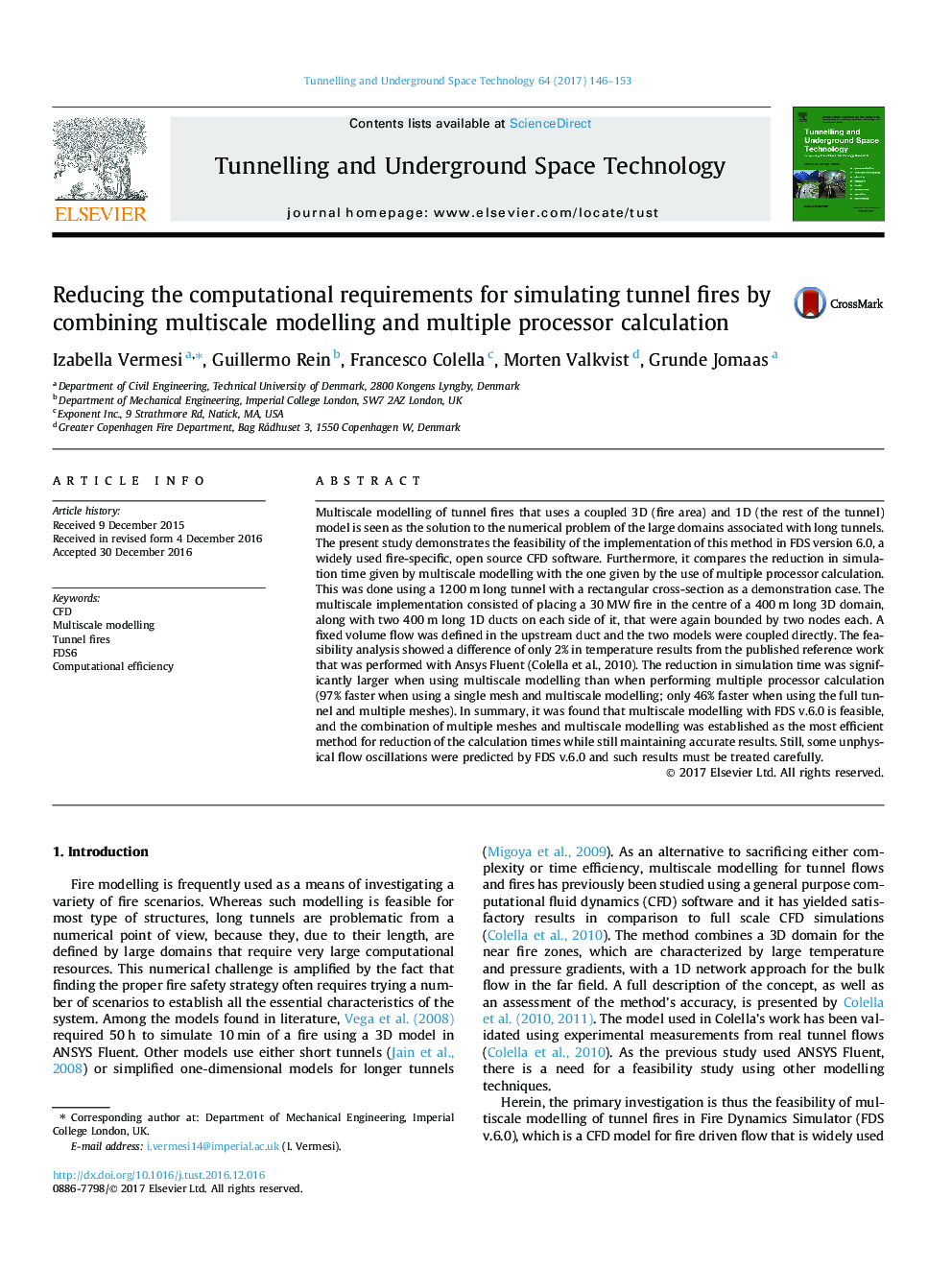| Article ID | Journal | Published Year | Pages | File Type |
|---|---|---|---|---|
| 4929317 | Tunnelling and Underground Space Technology | 2017 | 8 Pages |
Abstract
Multiscale modelling of tunnel fires that uses a coupled 3D (fire area) and 1D (the rest of the tunnel) model is seen as the solution to the numerical problem of the large domains associated with long tunnels. The present study demonstrates the feasibility of the implementation of this method in FDS version 6.0, a widely used fire-specific, open source CFD software. Furthermore, it compares the reduction in simulation time given by multiscale modelling with the one given by the use of multiple processor calculation. This was done using a 1200Â m long tunnel with a rectangular cross-section as a demonstration case. The multiscale implementation consisted of placing a 30Â MW fire in the centre of a 400Â m long 3D domain, along with two 400Â m long 1D ducts on each side of it, that were again bounded by two nodes each. A fixed volume flow was defined in the upstream duct and the two models were coupled directly. The feasibility analysis showed a difference of only 2% in temperature results from the published reference work that was performed with Ansys Fluent (Colella et al., 2010). The reduction in simulation time was significantly larger when using multiscale modelling than when performing multiple processor calculation (97% faster when using a single mesh and multiscale modelling; only 46% faster when using the full tunnel and multiple meshes). In summary, it was found that multiscale modelling with FDS v.6.0 is feasible, and the combination of multiple meshes and multiscale modelling was established as the most efficient method for reduction of the calculation times while still maintaining accurate results. Still, some unphysical flow oscillations were predicted by FDS v.6.0 and such results must be treated carefully.
Related Topics
Physical Sciences and Engineering
Earth and Planetary Sciences
Geotechnical Engineering and Engineering Geology
Authors
Izabella Vermesi, Guillermo Rein, Francesco Colella, Morten Valkvist, Grunde Jomaas,
